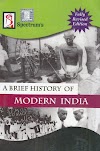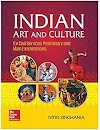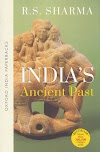Miniature Paintings & Rajasthani Paintings
Miniature Painting - It is a small scale painting but very detailed in nature. It is created on perishable materials like paper, clothes, palm leaves, etc.
Criterion for any painting to be called as Miniature Painting
- The painting must not be very larger than 25 square inch (in the later period, this condition was diluted).
- The object to be painted must not be larger than 1/6th of the original size (still followed).
Early Miniatures in India
The early miniature paintings can be broadly classified into the following three categories based on the region and kingdom who patronised the painting.
- Pala Miniature Paintings
- Western Miniature Paintings
- Mughal Miniature Paintings
Pala Miniature Paintings
- It is the first time in India, miniature painting began under the Pala ruler of Bihar and Bengal.
- In this phase, painting was created on the palm leaves.
- It was a type of manuscript painting where image was accompanied with handwritten description.
- The theme of the painting was based on Buddhism.
Western Miniature Paintings
- Region - South Rajasthan and Gujarat
- It was patronised by Jain traders of these areas.
- It is also a type of manuscript painting created on palm leaves but later they also started painting on paper.
- The theme of the painting was based on Jainism and particularly on the life of Vardhaman Mahavira.
Mughal Miniature Paintings -
- Humayun when came back from Iran, brought two famous miniature painters who are Abdus Samad and Mir Sayyid Ali.
- With the arrival of these two painters, Persian Safavid Style of Miniature Painting started in India.
Painting during Akbar
- Akbar employed a large number of Indian painters into the court.
- He opened kharkhanas of painting where daily life articles were also painted.
- He also encouraged painters to a system of rewards.
- He also opened a studio of painting known as Tasveerkhana.
- Realisation was the keynote of Mughal Paintings.
- At this point of time, Mir Sayyid Ali and Abdus Samad created Hamzanama Series Painting which was based on the life of Amir Hamza (uncle of Prophet).
- Impressed by Hamzanama Series, Akbar ordered to translate the Indian literatures into the painting. As such Tutinama (Tales of Parrot) and Razmnama (Mahabharat) was created (Razma in Urdu means War).
- Akbar also planned to translate Ramayana in painting but unfortunately before he executed his plan, he died and it was not continued by Jahangir.
Painting during Jahangir
- Jahangir's period is considered as the climax of Mughal painting.
- Jahangir himself was a great painter and he was naturalist which means that he created paintings of various flora and fauna (Nature).
- One of the major achievements of this period was the creation of portrait painting and the panorama.
- One more initiative of this period was decorated margins in the paintings.
Painting during Shahjahan
- Realism was diluted in this period.
- There was very wide uses of gold and silver colour in the paintings.
- European influence started in the Mughal painting during the period of Shahjahan which was reflected from the use of light and shadow method of painting.
- Shahjahan's period also marks the beginning of pencil sketching and charcoal sketching.
Aurangzeb's Period
- During the reign of Aurangzeb, all the art form were discouraged and in this scenario artists started to fled to the adjoining kingdom such as Rajput areas of Rajasthan and Himachal.
Note - According to Percy Brown, with Jahangir's passing the soul of Mughal Painting died with him.
Rajasthani Paintings (Rajput Paintings)
Rajasthani Painting started to emerge in the 16th century but it was based on the Mural tradition.
From the 17th century onwards, Rajasthani Painting transferred into miniature painting.
There was a huge growth of Rajasthani Painting during the Aurangzeb's period.
Common features of Rajasthani Paintings
- Most of the Rajasthani Paintings are inspired from the life of Lord Krishna such as childhood pranks of Lord Krishna and also the flute playing Krishna.
- Majority of the themes of Rajasthani Painting is inspired from the Chaurapanchasika (written by Bilhana) and Geeta Govinda (written by Jayadeva).
- The Krishna's colour in the painting is often depicted in blue colour.
- The local vegetation of the Rajasthan is also elaborately depicted at many places. For example - The painting of Kota and Bundi.
There are many special paintings and traditions in Rajasthani painting which are as follows:
1. Ragamala Painting
- Place - Mostly in Mewar and sometime in Marwar area.
- The word Ragamala is derived from the word 'Raga' which means Music. Thus, this painting is the fusion of Musical ragas and painting.
- It is a very unique painting of Rajasthan which is based on Hindustani Musical ragas such as Megha, Deepak, etc.
Megha Raga Painting - Dawn, Rainy & Courage (all three are depicted in the painting).
2. Krishangarh Painting
- This is also a unique painting of Rajasthani school of art where the physical features are exaggerated such as pointed nose, pointed chin, almond shaped eyes, etc.
- Many a time eyes exude the margin of the face and they also represent body with slender curve.
- Example - Bani Thani painting (by Nihal Chand)
Note - Bani Thani Painting is known as the 'Fashion lady of India'.
Previous Article - Ancient India Paintings
Next Article -
Notes on other subjects
Optional Subject
Note - This is my Vision IAS Notes (Vision IAS Class Notes) and Ashutosh Pandey Sir's Public Administration Class notes. I've also added some of the information on my own.
Hope! It will help you to achieve your dream of getting selected in Civil Services Examination 👍







0 Comments